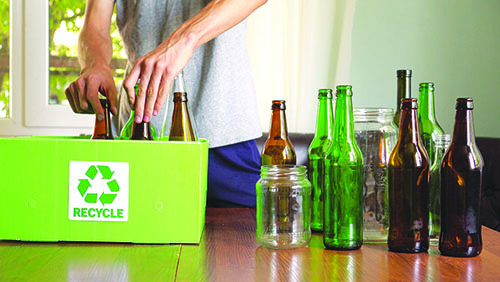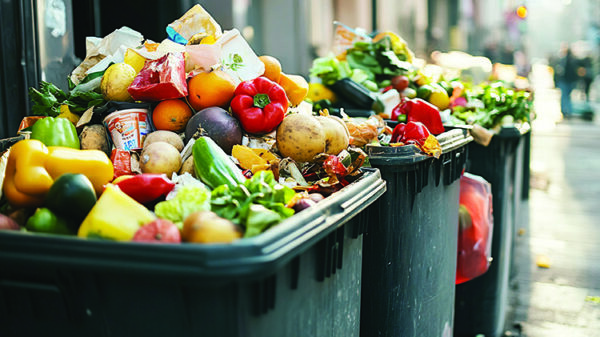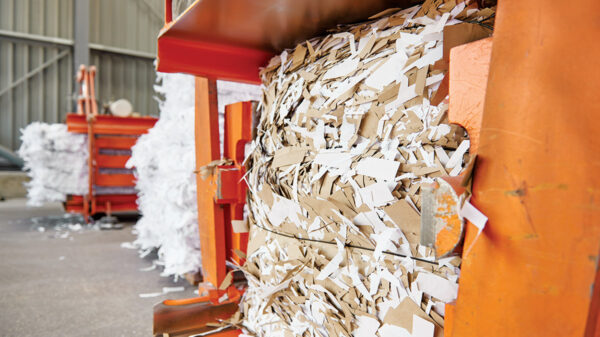According to a recent report by the Aluminum Association and the Can Manufacturers Institute, the recycling rate for aluminum beverage cans has hit the lowest point in decades, declining from an average of 52 percent in 1990 to a 43 percent recycling rate in 2023.
According to Mark Rea II, general manager of supply and trading with Georgia-Pacific Recycling, there are several factors that have led to the current 30 year low for aluminum recycling rates.
First, is the unintended consequence of single stream recycling. Single stream recycling has helped boost recycling rates in general by enabling different types of recycled goods to be collected in one receptacle. But, unfortunately, single stream recycling leads to the contamination of some of those recycled items, like aluminum, and there’s a lack of technology to address that contamination.
As Rea explained, the result is that some aluminum collected through single stream recycling can’t actually be recycled.
“Second is a lack of awareness around what grades of aluminum can be recycled and a lack of incentives to help drive recycling activity,” Rea said. “It’s true that a number of incentive programs have achieved great success, such as deposit refunds offered by bottle bill states, tax credits for recycling companies, reverse vending machines that pay cash for used beverage containers, and utility bill discounts offered by municipalities to reward curbside recycling participation. But these programs differ from city to city and state to state, with some not offering any incentives and others not adequately communicating them.”
Lower recycling rates naturally lead to less supply, which, in turn, drives up prices. As Rea explained, where shortages in the supply chain exist, manufacturers are left filling the void with virgin aluminum. Of course, the high energy costs associated with producing virgin aluminum makes it more costly to use.
“So, you have this vicious cycle of a low recycled aluminum supply creating high demand and driving up material costs followed by an increase in high-priced virgin aluminum production, which drives up the cost of goods,” Rea said.
Scott Biondich, president of Packaging Innovation and Design LLC, said the 2023 aluminum recycling rate was below the 30 year average and he said the aluminum industry and aluminum beverage and food can makers need to do a better job communicating the benefits of aluminum recycling directly to consumers.
“Current recycling rates are unacceptable and I have been suggesting the industry needs to do more. There are industry organizations like The Aluminum Association and the Can Makers Institute that should participate as well,” Biondich said. “Recycling aluminum has so many benefits and the average person doesn’t understand the significance.”
As mentioned, one of the biggest causes in aluminum recycling reduction rates stems from contamination as there is a lack of efficient processing technology at recycling facilities for separating aluminum from other materials.
Daniel Mendes, country business manager at Wyda Packaging, is an expert in the global aluminum market. Wyda aluminum products are highly recyclable and new to the U.S. market. Mendes said the drop in aluminum recycling is multifaceted, from infrastructure challenges to recycling awareness and public engagement.
“Regarding machinery and processing, there is an opportunity to ensure recycled and recyclable materials are more easily sourced,” Mendes said. “The inconsistency of recycling policies across the country has led to consumer confusion and decreased participation. The growth in GDP and the consequent increase in the cost of recycling processes have also contributed to the decline.”
As Mendes explained, reduced aluminum recycling is creating operational and financial challenges across the market. The surplus of low-grade scrap is impacting profitability, while the growing demand for high-quality aluminum is driving up production costs.
“This creates a challenging environment for businesses, as they struggle to source cost-effective, high-quality recycled materials, leading to increased reliance on more expensive primary aluminum,” Mendes said. “The reduction in recycling rates means that there is an increased reliance on imported aluminum, as almost all aluminum used in the market is imported in various forms.”
Blake Gordon, general manager of digital trading with Georgia-Pacific Recycling said that what’s also contributing to a lack of supply of recycled aluminum is the vast number of businesses that are left out of the recycling marketplace.
“Georgia-Pacific Recycling is one of the world’s largest traders of recycled paper, metals and plastics,” Gordon said. “Our business has been solely focused on partnering with large volume producers, which enables us to prevent more than five million tons of recyclable materials from ending up in landfills each year. Several years ago, as demand from manufacturers for recycled waste grew in response to growing consumer demand for products made from recycled materials, we sought to find additional sources of recycled materials. What we found was a very large gap in the recycling marketplace.”
As Gordon explained, there are tens if not hundreds of thousands of recycled waste producers, particularly small and medium sized businesses, that don’t have a consistently high volume of recycled waste. These businesses aren’t participating in the marketplace. They aren’t selling their recycled waste.
“From our research, we found that these potential suppliers don’t even know the recycling marketplace exists or that their waste is valuable,” Gordon said. “Or, if they do, they have difficulty finding a buyer and, more specifically, a buyer who will pay them fairly. In essence, many of these businesses are unable to process and recycle the materials they collect, resulting in the materials being sent directly to a landfill as their only available option. This represents a significant lost opportunity for the recycling marketplace and the environment.”
Efforts Being Made
A concerted effort is underway by companies and industry bodies to offset the decline in aluminum recycling. As Mendes pointed out, this includes setting ambitious industry-wide recycling targets, advocating for policies that promote producer responsibility and deposit refund systems, and making substantial investments in advanced sorting technologies and infrastructure improvements.
“As a global company, Wyda integrates recycling guidelines and information into its marketing. Of course, amplifying public education campaigns across all media, especially social channels, and getting into communities directly would be a huge help in raising awareness,” Mendes said. “We also believe strongly in collaboration; partnerships between companies, communities, and industry associations are key to sharing best practices and reaching a wider audience. Ultimately, it’s about making recycling easy and accessible for everyone.”
Looking ahead, Mendes said the growing global focus on sustainability is creating a real demand for recycled materials, and aluminum’s inherent recyclability makes it a key player. He believes the aluminum recycling industry will see technology drive efficiency gains, especially in sorting and processing, and he anticipates stronger policies to support recycling.
“While challenges like outdated infrastructure exist, the industry is clearly moving towards a circular economy, which will boost demand for recycled aluminum,” Mendes said. “The future of the aluminum recycling marketplace will likely depend on the successful implementation of uniform policies and incentives. As the global demand for aluminum continues to rise, there will be a greater emphasis on sustainable practices and innovations in recycling technology. Companies will need to continue educating consumers and finding ways to make recycling processes more economical to ensure a stable supply of recycled aluminum for various industries.”
Gordon stressed that there is always movement and innovation within the recycling industry to help improve recycling rates, protect the environment, and advance the circular economy. Efforts have been made to modernize recycling equipment to better capture aluminum content from the waste stream – even contaminated aluminum content.
“In addition, recycling industry associations have been sharing educational content, and within the industry there are grants available for enhanced recycling equipment,” he said. “Clearly, though, there’s an opportunity to do more.”
For their part, when Georgia-Pacific Recycling realized that there are potentially hundreds of thousands of smaller volume recycled waste producers left out of the recycling marketplace, the company launched hubbIT, an online portal that gives these businesses upfront pricing so they can immediately see pricing for their recycled materials, such as aluminum. From there, if they contract with Georgia-Pacific Recycling, they get fast, easy and streamlined access to the recycling marketplace.
Gordon pointed to another positive example of advancements being made in the aluminum recycling arena is Waste Connections, which is one of the largest recycling companies in North America. This is an organization that is constantly investing in and evolving their operations to modernize so they can help increase recycling rates across the board.
“For example, they just rebuilt their MRF facility in Plainfield, Illinois, with new state-of-the-art automated sorting equipment,” Gordon said. “They also made a large investment in an AI automation driven, collection and sorting operation in Colorado that’s set to open in 2026. That facility will process up to 62,000 tons of single-stream recycling annually.”
Gordon said it’s important to note that aluminum is often considered one of the most recyclable commodities. “Surely, as an industry, we recognize that value and we’ll continue to innovate, evolve, and progress to the benefit of the recycling marketplace and this one and only Earth of ours.”
Published April 2025







